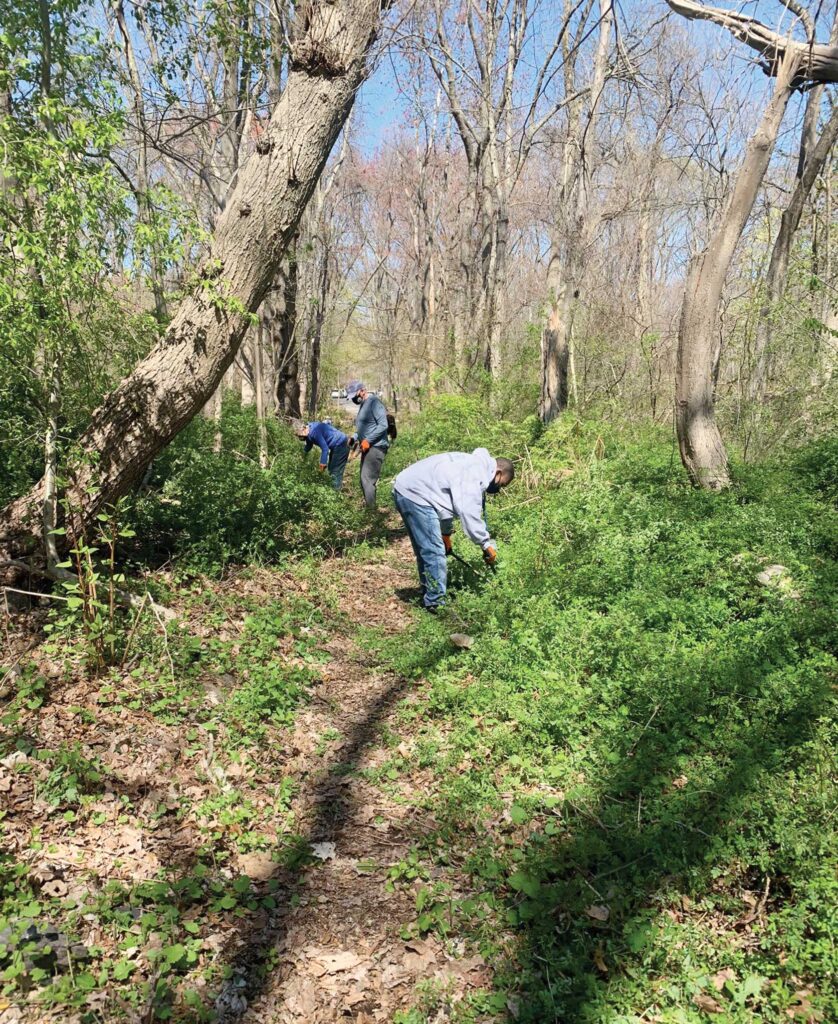Mattapan ‘urban wild’ slated for restoration
City plans cleanup, trails in Mattahunt Woods

The planned restoration of Mattahunt Woods in Mattapan will be designed to maintain habitat for plants and wildlife, while improving community access to the green space, city officials said.
The project, to which the city has allocated $750,000, aims to clear out debris and trash, construct and maintain trails, and provide better signage and education for visitors.
The area, a secluded forest wetland and one of the city’s 29 “urban wilds,” was first protected following a citizen petition in 2008.
“I think with this particular project, it’s an exciting opportunity for the city and for the community to take one of our very wooded, overgrown urban wilds that needs a little bit of upkeep, to say the least, in an area where green open space is really needed and valued and really create a new, passive open space for the residents of this neighborhood to enjoy,” said Catherine McCandless, who is managing the project for the city.
In urban wilds, which are designed to protect vestiges of the area’s biodiversity, the focus tends to fall on plant and animal life, with human use and access often a secondary consideration.
“We’re really drilling down and focusing on plant and wildlife habitat and trying to maintain what diversity there is in the city,” said Paul Sutton, urban wilds program manager for the city.
In Mattahunt Woods, that means preserving the two wetlands on the site, removing invasive plant species and cleaning up the construction debris and trash that have been dumped there.
Sutton said that, while much of the more accessible sections of the area are now overgrown with invasive plants like Japanese knotweed, the more remote parts of the urban wild still have healthy native plant life.
“When you go into deeper parts of the site, you will see remnants of a healthier ecosystem, so it’s working from those healthy areas out, expanding them out,” Sutton said.
McCandless said she hopes that the improvements will help signal that it’s not a place to leave trash.
“We’ve seen [with] some of the other projects that [the Urban Wilds team] has worked on, that it has discouraged that misuse of the property by making it more of a publicly accessible space,” McCandless said.
Community members hope the improved space will help bring the community together.
Fatima Ali-Salaam, chair of the Greater Mattapan Neighborhood Council, said, “When you start to use it as a space that you’re physically taking care of and you’re taking care of your neighbors and engaging with people, it becomes a different type of space. You want to take care of it because it’s a shared space.”
The city team also hopes the improved space can serve as a resource for students at the Mattahunt Elementary School, which borders the urban wild, offering educational opportunities and better access to the green space for kids.
McCandless said the work might include, while managing and building new trails, constructing a new entrance to the urban wild near the school, or creating educational signage and spaces for students to learn about local ecology or participate in art classes.
Sutton said that there aren’t many instances where an elementary school sits right next to an urban wild, so he sees the possibility of a close working relationship.
As the city improves the area, efforts should be made to make sure that increased visitation doesn’t cause damage, said Earl Faulk, a signer of the original 2008 petition that protected the space.
“Sometimes when you get too much of a crowd, you know, they can tend to trash things,” Faulk, assistant director of the Colorado St. Citizens Group, said. “Don’t mind visiting, don’t mind passing through, but don’t hurt.”
As the concluding event of a series of community engagement efforts that began in May, the city team will hold a virtual open house at 6 p.m. on Sept. 13 to present the final design for the space and discuss next steps.
McCandless said that following the open house and pending permitting through the Boston Conservation Commission, the city hopes to bring a construction team onsite starting in the spring. Sutton said he estimates the project could be substantially completed by the end of November 2024.
Faulk, who lives behind one section of the urban wild, highlighted that the space is one of the things that makes Mattapan special — even if people don’t always notice it.
“Sometimes what happens is that all you hear and the only attention you get is a stabbing, a shooting and things like that,” Faulk said. “But the thing is, no one ever looks at the flipside, on how beautiful it is, and how many people and children are enjoying it.”






